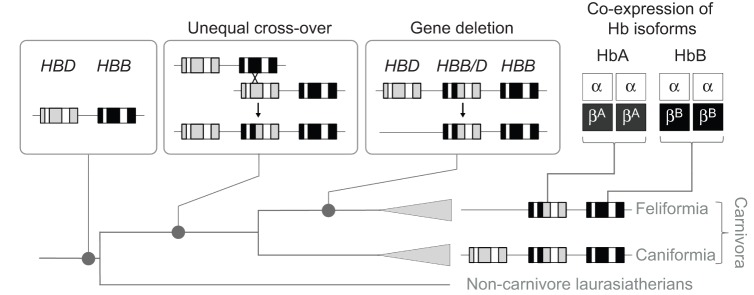Fig. 2.

History of structural changes in the adult-expressed HBD and HBB β-globin genes of feliform carnivores. The ancestor of laurasiatherian mammals [the supraordinal group that includes carnivores, as well as bats, pangolins, eulipotyphlans (shrews, moles and hedgehogs), perissodactyls and cetartiodactyls] possessed a tandemly linked pair of HBD and HBB genes. In the stem lineage of carnivores, an unequal cross-over event produced a duplication in the chromosome now containing a chimeric HBB/D fusion gene, flanked by the parental HBD and HBB genes on the 5′ and 3′ sides, respectively (Gaudry et al., 2014). In the common ancestor of felids (or possibly in the common ancestor of all feliform carnivores), the 5′ HBD gene was deleted after divergence from the ancestor of caniform carnivores. Consequently, adult cats co-express two structurally distinct hemoglobin (Hb) isoforms: HbA (which incorporates β-chain products of the chimeric HBB/D gene) and HbB (which incorporates β-chain products of the HBB gene). The two isoforms share identical α-chain subunits.
